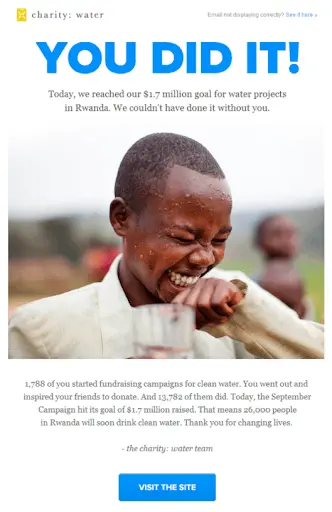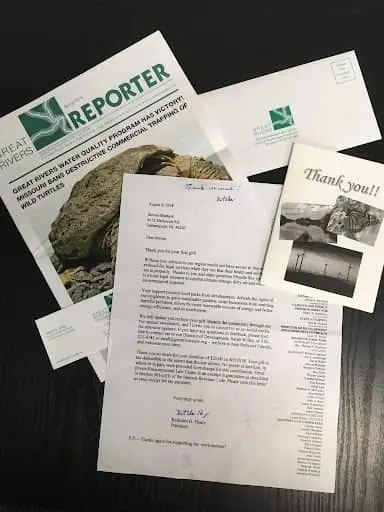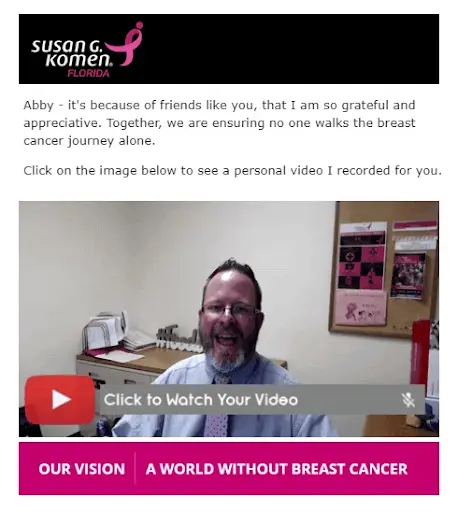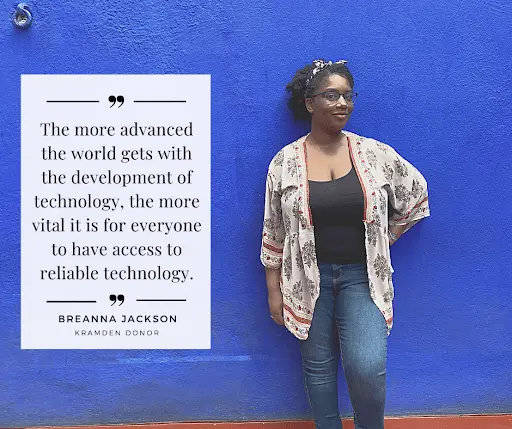Fundraising is often the primary focus of a nonprofit organization, and for good reason. Donors empower your mission and enable volunteers to do meaningful work. And the secret sauce to keeping those financial gifts coming is not only to recruit new donors but also to incentivize donor retention. This is why drafting a thank you letter to donors that makes them feel appreciated can become a cornerstone of your nonprofit organization’s fundraising strategy.
Why it’s important to write a thank you letter to donors
While you may have your hands full managing a nonprofit marketing strategy or a social media campaign blitz, it’s critical not to overlook the simple things. Small gestures of gratitude for your existing donors do more than create connections and foster a sense of community. The best donor thank you letters allow your nonprofit organization to demonstrate proof of your impact and serve as a springboard for recruiting new donors.
How to write a donor thank you letter
Donor thank you letters may sound intuitive, but there’s an art to producing and sending these missives of gratitude. Research has shown that senders of thank you letters often underestimate the positivity their gratitude generates, so investing a little time to get these notes right pays dividends. Here are a few tips for writing a thank you letter to donors that’ll impress.
1. Practice genuine gratitude
This may sound obvious, but saying thank you without an ulterior motive is paramount. Don’t try to tack on another ask or use the opportunity to amplify your current fundraising campaign. Find a way to express your gratitude with language that is heartfelt but avoid producing formulaic messages that feel trite. Crafting a tone that feels professional but not perfunctory takes time, so sketch out a few drafts until you get it right.
2. Demonstrate impact
The simplest way to frame nonprofit fundraising is that donations are investments donors make in your mission. Demonstrating the value those donations provide gives proof their money is being invested wisely. When demonstrating impact in a thank you letter to a donor, it’s best to be specific and connect the donation to real-world examples. Flashing stats that reflect progress towards a goal is great, but putting a face on the work being done also helps humanize your organization’s efforts.
3. Be personal
Keeping the language vague might allow mass production of donor thank you letters, but you’ll lose the ability to connect on a personal level. Instead, include names whenever possible and make sure your donor thank letter is signed by a real person within your organization. If it’s feasible, handwritten thank you notes are an especially nice touch.
4. Timeliness matters
Sending a thank you letter to a donor months after the initial gift guarantees your gratitude will get lost in the noise of daily life. Aim for sending your thanks within 1-2 days of the actual donation, especially if you’re sending a note via snail mail. If you plan to send a thank you email, take steps to craft the subject line to ensure it doesn’t get caught in a spam filter.
5. Recognize both repeat and first-time donors
Taking the time to shout out a first-time donor or recognize a loyal, consistent supporter helps your thank you letter to a donor feel both relevant and personal. Just a few flourishes that reflect upon the excitement of getting involved with something meaningful or a track record of generous gifts shows the kind of attention to detail that is a credit to your nonprofit organization.
6. Keep it short and simple
Once you’ve incorporated the above advice into your donor thank you letters, take a moment to edit your work for grammar, punctuation, and brevity. You want to strike the right balance of thoughtfulness without veering into a rambling thank you letter that encourages skimming. It may help to stick to a template like the ones available from Lucidpress to keep your formatting and length consistent.
Examples of the best donor thank you letters
Tips are tremendously helpful, but there’s nothing like seeing guidance in action. Gathered below are examples of the best donor thank you letters that exemplify both authentic gratitude and effective nonprofit fundraising at work.
Get specific about the impact of the donor’s gift
If you want to see the gold standard of effective nonprofit marketing, Charity: water is it. Its mission to provide safe, clean drinking water to every person on the planet is funded by millions of donor dollars that power water projects around the world. Below you’ll see a thank you letter to donors filled with details about the current project in Rwanda, including specifics about what is being funded, how many donors it took to reach the goal, and the number of people directly impacted by the project.

Focus on donor retention by sending a personalized packet
The best donor thank you letters are also opportunities to inform and connect people with your work. This example of a thank you packet from Great Rivers Environmental Law Center includes their current newsletter, a typed letter with details about how the donation will be used, a receipt for tax purposes, and a handwritten thank you note. You’ll notice the letter specifically calls out that this donation was a first-time gift and comes straight from the desk of the president of the nonprofit organization.

Sending a donor thank you video puts a face to fundraising efforts
If letters and emails seem a little old school for your tastes, try making a video thank you letter to donors. All it takes to produce passable video content these days is a decent quality smartphone camera and a steady hand. Susan G. Komen, one of the premier breast cancer fundraising organizations in the world, did exactly that by asking one of the leaders in their organization to put a face to a personalized video message. If you’re not comfortable with video, try to at least incorporate visuals into your thank you letters to donors that speak to the work you do or the people it benefits.

Social media donor spotlights demonstrate the value of your nonprofit organization’s mission
Donor shoutouts on social media require careful planning, but they can pay off by helping you reach new audiences. Spotlights like the example below from Kramden Institute can live on either your social media timeline or website and serve as a way to highlight the contributions of donors. Of course, you’ll need donor consent to produce this content and the ability to create professional photos to showcase on your social channels. But the payoff of putting a face to your community of support is that it can encourage others to become part of the work you do.

Take these examples to heart and produce a thank you letter to donors that compliments your fundraising approach and cultivates a mindset of gratitude. You’ll discover that your nonprofit organization will reap the benefits with increased donor retention and a culture of positivity that gives back to both your organization and the community.
Learn more about the best donor thank you letters and how to amplify your mission with our free nonprofit messaging guide.



